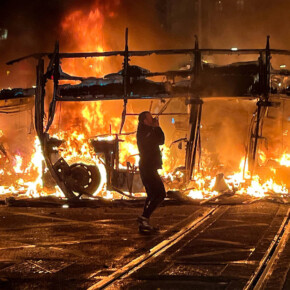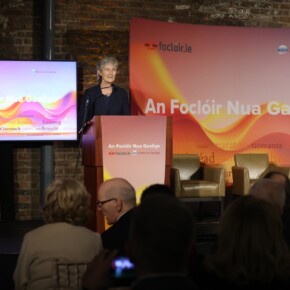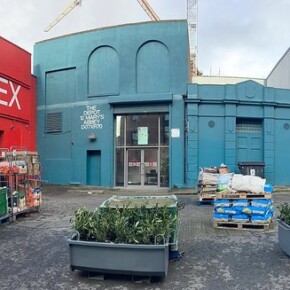Remembering tragedy and heroism on Burgh Quay
Dublin People 12 Sep 2014ON Saturday May 6 1905 a team of workers from Dublin Corporation were investigating reports of a problem in the city’s sewers, under the junction of Burgh Quay and Hawkins Street.
This routine inspection of the sewers on the south bank of the Liffey was to end in a devastating tragedy that struck a chord with people across Dublin and beyond.
Shortly before 3pm, John Fleming a 42-year-old worker, removed the manhole cover and descended the 24-foot ladder into the dark sewer below.
While investigating the broken pipes, Fleming was overcome by toxic sewer gas and fell unconscious. Two of his colleges, John Coleman, a fellow sewer worker, and Tom Rochford, a clerk of works with the Corporation, went to his rescue but were immediately overcome by the deadly gas.
A newspaper boy named Christopher Nolan, who had witnessed the accident, ran to get help, while Kevin Fitzpatrick a passing hackney driver realised that lives were at risk and there was no time to waste.
Thinking quickly and in a courageous effort to rescue the dying workmen, Fitzpatrick tied a rope around his waist and lowered himself into the sewer.
Meanwhile, on O’Connell Bridge young Nolan found Constable Patrick Sheehan of the Dublin Metropolitan Police, who, on hearing the details on the unfolding tragedy sprang into action. Aged just 29 and originally from Glin, County Limerick, Sheehan was a mountain of a man. Standing at 6’4 and weighing in at 18 stone, Sheehan had already built an impressive reputation for heroism.
The stories of how the young constable had rescued an elderly couple from a collapsing building on Townsend Street, or how he had single handily wrestled a rampaging bull into submission on Grafton Street, were already the stuff of legend. Sheehan had even joked at the time, that he had been afraid the beast’s horns were going to break!
Quickly reaching the junction of Burgh Quay and Hawkins Street, Sheehan removed his tunic and descended into the sewer, joining Kevin Fitzpatrick in the rescue mission. Working together the two men managed to save John Coleman and Tom Rochford, and hoist them to safety.
Unbeknown to our heroes, by this stage John Fleming had succumbed to the gas and was dead. Returning in a second attempt to rescue Fleming, Sheehan was overcome by the gas.
Pulled to safety, Sheehan and Fleming were rushed to the Mercer Hospital, but unfortunately it was too late. Both men were pronounced dead.
In a tragic twist of faith, it soon emerged that Sheehan should have been nowhere near Burgh Quay on the day of the accident. The young constable was only on duty to cover the shift of a friend who had decided to go to the theatre.
The tragic death of John Fleming as he served the people of the city and the story of the heroic efforts of Patrick Sheehan, who gave his life while rescuing others, had a profound impact on people across Dublin, and indeed Ireland.
The selfless courage of Tom Rochford, John Colemen, Kevin Fitzpatrick and Christopher Nolan became a source of great pride for Dubliners.
While Patrick Sheehan was a single man, John Fleming left a widow and nine young children. This added greatly to the sense of tragedy and loss felt at the time.
In August 1906 a monument was erected to the memory of Patrick Sheehan and John Fleming and still stands close to the scene of the tragedy, at the junction of Burgh Quay and Hawkins Street. Commissioned by the Mayor of Dublin and the Mansion House Committee, the monument was paid for by public subscriptions. At a time of great economic hardship, the fact that people were willing to give what little they had for a memorial, gives some idea of levels of sympathy felt by the general public.
Interestingly, the monument is inscribed in both Irish and English. It reads:
‘This memorial was erected in memory of Patrick Sheahan a constable in the Dublin Metropolitan Police Force who lost his life in the 6th day of March 1905 in a noble and self-sacrificing effort to rescue John Fleming who had in the discharge of his duties descended the main sewer close by this spot and was overcome by sewer gas. It was also intended to commemorate the bravery of a number of other citizens who also descended the sewer to assist in rescuing the beforementioned, thereby risking their lives to save those of their fellow men.’
?¢ Daithà Ã? Riain is a Dublin based historian with a specific interest in social history and Ireland’s revolutionary period.











